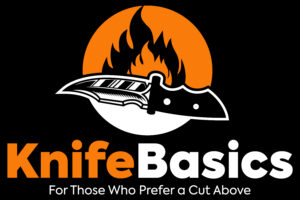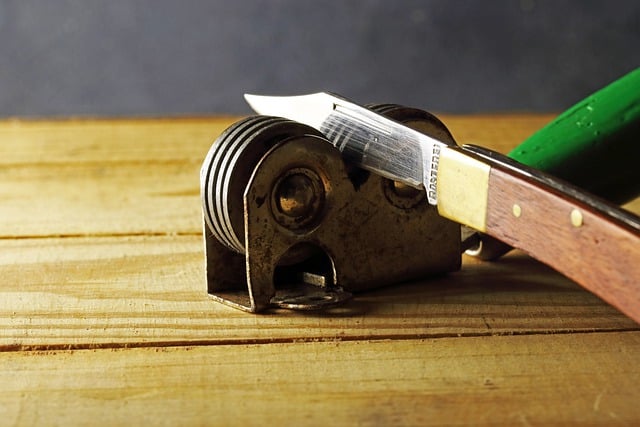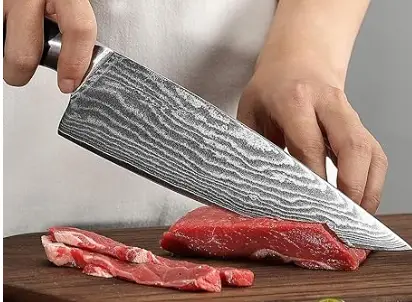For knife enthusiasts, each knife suits a particular need, and it helps to learn what kind of knife you are looking to work on within time. There are, of course, many knife blade examples, each made with a specific purpose, such as for kitchen utility, hunting, fishing, or basic survival.
One of these common blade examples is the drop point blade style. There is a good chance you have come across such a blade and are looking to own one. Before parting with your money, learn more about this blade type.
What Is a Drop Point?
From the outlook, a drop point blade can also be easily spotted with a convex unsharpened spine that runs from the knife handle to the blade tip in a gently curved manner. This attribute is no coincidence as it makes a drop point blade controllable with easy handling.
What Is a Drop Point Used For? (Drop Point Uses)
As an all-purpose knife
First of all, most knife users would agree a drop point knife comes in handy in different situations. The blade is famous for its easy handling, design, and extra cutting edge, making it highly functional for various tasks. These tasks can range from performing common kitchen uses such as cutting and slicing foods, fruits, and meat processing.
Hunting knife
The drop point blade style has a reputation for being a standard blade for hunting or survival knives. That is no surprise, as drop point knives have outstanding thrust cuts and deep slicing capability to make them terrific blades for general outdoor activities.
Drop Point Blade Pros and Cons
Pros of a drop point blade
Easy handling: A prominent attribute to the drop point blade style is the excellent handling of this particular knife design. From the outlook, the cutting surface(sharpened belly) is more extensive than average, with a slow slope to have the upper end form a spear-like point. Due to this design, the handling becomes easily manageable for a drop point blade.
Perfect slicing tool: The unique large slicing belly in drop point blades is an outstanding feature that gives such knives extra slicing capability. The drop point blade has a prominent cutting edge and a small unsharpened end, unlike other knife styles. Such a design gives you a larger cutting area with little use for the tip. In the end, this becomes an advantage when it’s time for skinning or slicing.
Strong blade tip: With such a broad cutting belly, you can be sure a drop point knife has adequate strength for its tip. This goes against the standard knife design often found in blade styles such as clip point knives.
Cons of a drop point blade
Not able to handle all meat processing: Unfortunately, a drop point blade is not ideal for all meat processing tasks. In particular, the drop point blade design can be a big letdown for meat piercing jobs. The blade surface area is more prominent than usual, meaning a reduced controllable cutting point.
Drop Point vs Spear Point


Depending on your design, you can have a spear point blade with either a double or single edge. But how does such a design fair against a drop point knife? Let us find out.
Functionality: A drop point blade has typical uses as a general utility knife with equal use for hunting and outdoor survival activities. However, a spear point is much different since its unique design makes it a specialized self-defense blade.
Cutting capability: The drop point offers detailed cuts for meat processing, while a spear point knife will get you more precise cuts and slicing through meat.
Strength: A spear point blade strength is weaker than a drop point due to the differences in the size of the cutting belly(sharpened edge).
Blade design: Whereas a drop point features a tactical blade design for aesthetics, you can expect your spear point knife to have more of a needlepoint blade style.
Drop Point vs Straight Back
Functionality: A straight-back blade comes off as a general all-purpose knife with most of the use as a kitchen utility tool for cutting, slicing, and chopping purposes. Still, a drop point blade also offers general purpose utility but focuses on being a blade for hunting, bushcraft, and other survival activities.
Cutting capability: A straight-back standard design allows for average to consider cutting or slicing capabilities. However, a drop point proves better at cutting than its counterpart due to the sizeable sharpened region.
Blade design: The straight-back blade design is standard with a straight spine angle and an average blade belly. For the drop point, the design is different in that there is an enormous slicing belly with a slow minor slope running from the handle to the tip.
SheepsFoot vs Drop Point Blade
A sheepsfoot lacks an actual sharp tip point alongside having a smaller cutting belly. If you consider the between a sheepsfoot or a drop point blade, here is what to know.
Functionality: Since a sheepsfoot lacks an excellent sharp tip, there are more minor roles the blade can play. At most, a sheepsfoot is only valid for cutting or slicing, whereas a drop point blade will cut, slice, stab plus pierce.
Cutting capability: You can count on a sheepsfoot to offer low blade capability with a minor cutting edge and lacking a pointed tip. The case is different from the drop point blades since they are much pointy with a sharper and significant cutting belly.
Strength: A drop point sticks true with a higher blade strength than a sheepsfoot blade style due to the extra cutting surface area and a less pointy tip.
Blade design: You can tell a sheepsfoot blade due to its straight edge, which combines with a convex spine featuring an angular slope at the tip. Yet, the drop point is much different from a spine that slopes from the handle to the tipping point.
Drop Point vs Wharncliffe
Functionality: A Wharncliffe blade is your go-to option if you are looking for a knife suitable for cutting tasks and rough carving functions. However, the drop point is much different with its functionality, majorly as a hunting and tactical survival blade.
Cutting capability: The drop point blade offers excellent cutting capability when confronted with different cutting tasks outdoors or indoors. But a Wharncliffe style blade has much less cutting strength but better precision skinning and peeling.
Blade design: For a more tactical blade design, the drop point blade would be your best pick among the two. However, the Wharncliffe is more aggressive-looking with a prominent sharp point and a significant cutting belly.







